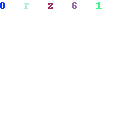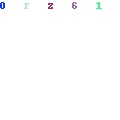Rhythm of Life [w. Thought Collider]
Rhythm of Life is an experimental art/design/science research project exploring the possibilities of diagnoses based on sonification. It has been exhibited at Boijmans van Beuningen, STRP Festival, MuseumNacht Amsterdam, and IMPAKT Festival. Full project statement below:
What if you could listen in on the chemical communication within your body? What would it sound like? In 2015, Thought Collider and Dave Young built an intriguing kinetic sound installation around a Photon-Multiplier Tube (PMT). The PMT is an experimental medical device designed to measure biophoton emissions from the skin. Biophotons, or ultra weak light emissions, are used in cell-to-cell communication in plants, bacteria and animals. Invisible to the naked eye, they belong to the electromagnetic spectrum. By placing their hands in the PMT, visitors could listen in on the electro-chemical messages transmitted by their bodies, hearing their emissions as complex percussive rhythms. Yet in doing so, they agreed to donate their personal body data to scientific and artistic research.
Additionally, collaborating with The Data & Ethics Working Group (of which the artists are also members) through a partnering artwork titled Experiment #2: Consent, the works probe the processes and authoritative gestures that legitimise the collection of personal information and how informed consent is attained and defined.
At STRP Biennale 2017, the data performances of the original 56 participants were replayed publicly for the first time. STRP visitors were given the opportunity to select and playback these anonymised performances. Doing so, they questioned to what extent visitors sense themselves within the audio data they heard, thus interrogating the ways in which we attribute meaning and value to bodily data.
The Rhythm of Life is a collaboration between art / design research practice Thought Collider, media artist Dave Young and Leiden University.



